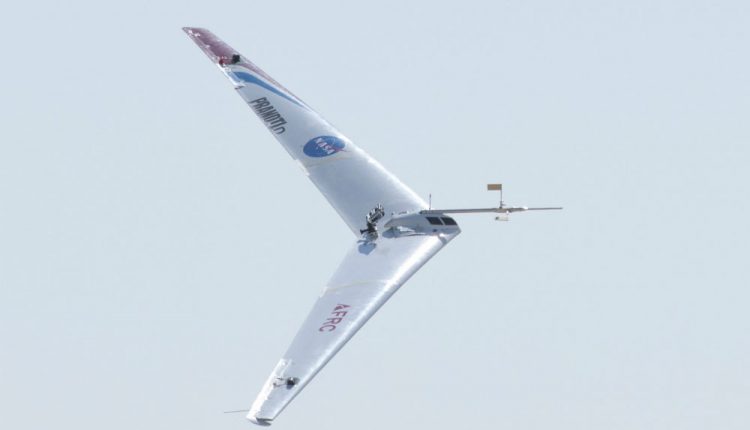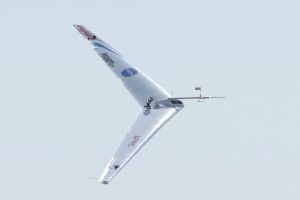
NASA researchers are constantly trying to make aircraft more efficient. Now they’re taking a look at the shape of an aircraft’s wings to see if modifications to design will result in improvements.
Researchers from NASA’s Armstrong Flight Research Center and Langley Research Center in Virginia have teamed up to conduct a series of wind tunnel tests investigating an aircraft aerodynamic wing scheme based on work from the 1930s that features a literal and metaphorical twist on conventional wing calculations, according to NASA.

(Image Credits: NASA / Ken Ulbrich)
They have been researching the wing configuration that consists of a complex boomerang shaped and over the summer worked with NASA Armstrong interns on a delta-wing-shaped aircraft with these wing design twist principles that could one day lead to flying a plane on Mars.
The recent wind-tunnel tests showed that the new wing design is actually quite stable.
“Some of this we knew already, but there were parts that were a little surprising, like how the wing maintains control even when it is completely stalled. These things are hard to know from intuition, it’s only having the data in hand that tells us about the real behavior,” said Al Bowers, NASA Armstrong chief scientist.
The wind tunnel research also added key information that will help the researchers create a simulation database of the wing so that they can assemble a full six-degree-of-freedom simulation to fly.
Next steps include flight tests to judge the aerodynamic pressures over the wing.
For more information about the technology, view the full story at NASA.
